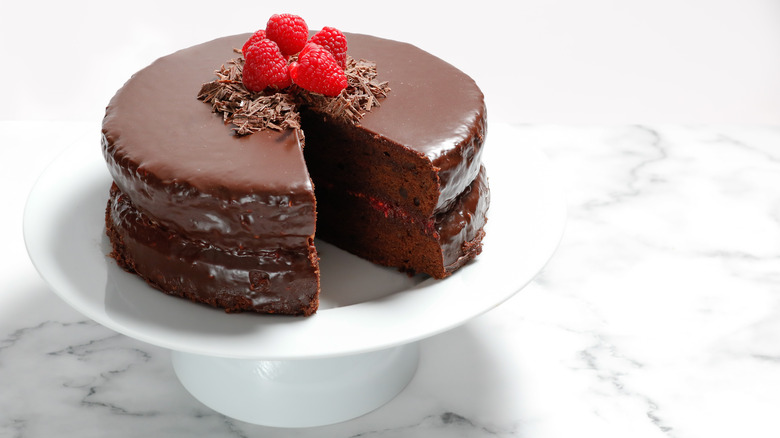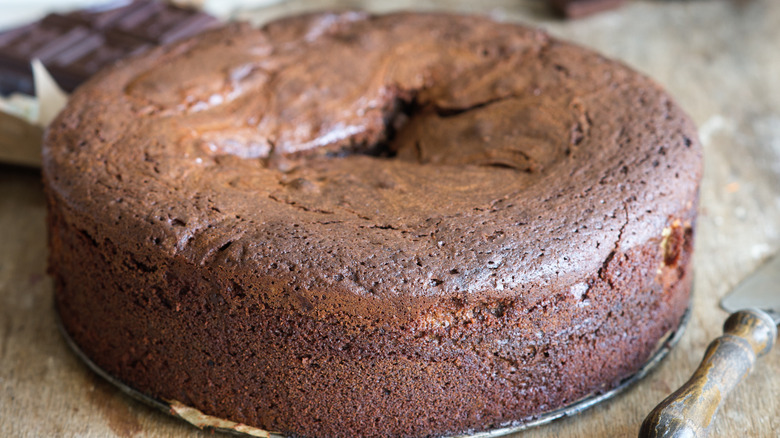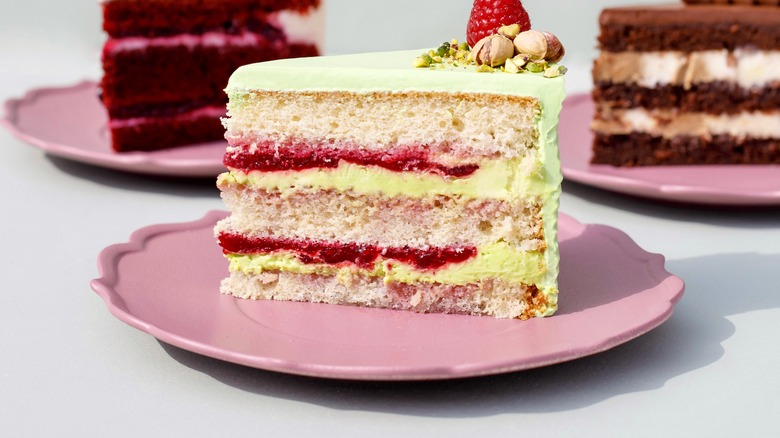Why You Should Purposefully Drop Freshly Baked Cakes
You've probably heard the saying that we eat with our eyes first. This is never more true than in the case of cakes. Whether you're baking for a family member's birthday or prepping a royal wedding reception, all eyes will be on the cake. Ideally, it should be a show-stopping centerpiece, but there is one fatal flaw that can ruin the entire presentation: a sunken cake.
There are a few reasons why such a mishap can occur. Improper baking can sink your cake, and so could an ingredient mistake, but there's another issue that many people overlook. You might think your cake's fate is sealed as soon as you bake it, but there is one more trick you can pull out after the cake comes out of the oven to save you from the dreaded sunken center. It involves dropping your freshly baked cake.
Dropping a cake might sound like a technique from the Three Stooges' kitchen, but when done in a careful and controlled manner, it should be fine. As soon as the cake is out of the oven, drop the pan from a short height (about 30 centimeters or one foot in the air) down onto a hard counter or floor. The reason that this technique can help you avoid a sunken cake is thanks to some simple science. Let's break it down.
The science of dropping your cake
The cake-dropping technique is detailed by Peter Barham, a physics professor from the University of Bristol, in his 2001 book, "The Science of Cooking." As Barham explains, sunken cakes have to do with the arrangement of air bubbles in the sponge. Cake batter includes a leavening agent (typically baking soda or baking powder), which produces tiny little bubbles as it bakes, causing the cake to rise. It wouldn't really be accurate to call these "air bubbles" as they are full of water vapor produced in the heat of the oven. As the cake cools, that vapor condenses back into water, causing the bubbles to collapse. The edges of the cake stay sturdy because they are supported by the walls of the pan, but the center caves in.
In order to prevent the bubbles in your cake from collapsing, you need to introduce air from the outside to replace the condensed water vapor. By gently dropping the cake, you can open up some of the bubbles, allowing air into the sponge and keeping it light and fluffy. Once you've done this, you can let the cake cool without the bubbles in the sponge deflating. Barham's technique has been endorsed by other publications, but it has also been subject to skepticism. Let's see why some are suspicious of this method and whether a slight tweak to it could be just the thing you need.
Some tests have challenged the cake-dropping method
More recently, chemist and food stylist Janice Lawandi put Barham's cake-dropping method to the test, chronicling her findings on her website, The Bake School. She baked two identical cakes and dropped one from Barham's specified 30 cm height right after removing it from the oven. She found that the dropped cake displayed more center sinkage than the undropped cake and speculated that this was because a cake fresh from the oven has a very fragile structure and can't stand up to such force.
However, Lawandi also speculated that she may have used too much leavener in her cakes, causing separate complications. Cookbook author and popular TikTok chef Grandbabycakes also tested the cake-dropping method and found great success with it, noting that it can also prevent your cake from doming at the top.
Another version of the cake-dropping method has appeared on several baking sites. It involves dropping or tapping the cake pan before you put it in the oven. The goal here differs from the Barham method; it focuses on removing large air pockets from the batter so that the cake has a nice, even texture. It could be worth playing a bit of kitchen chemist on your own and putting both methods to the test.


